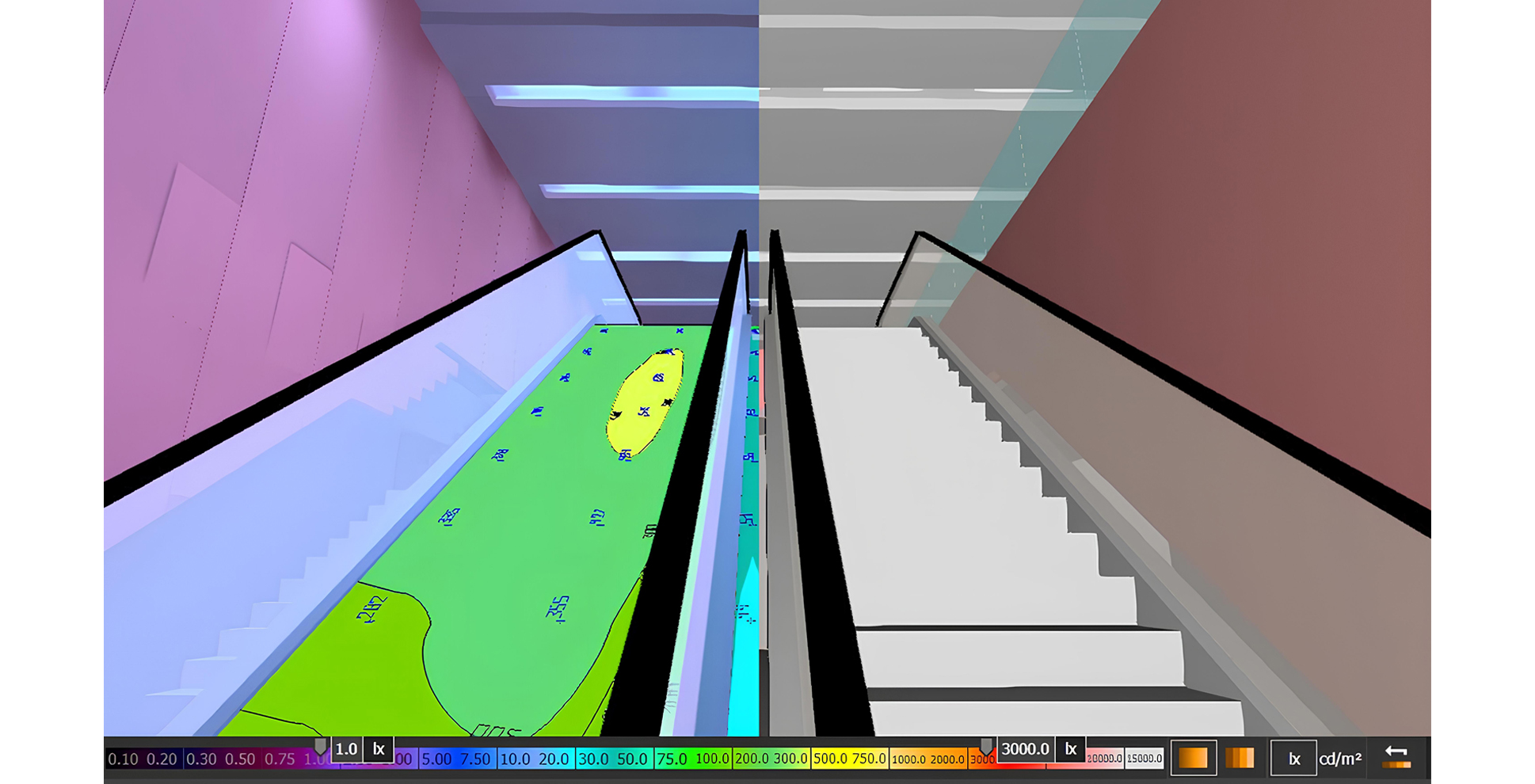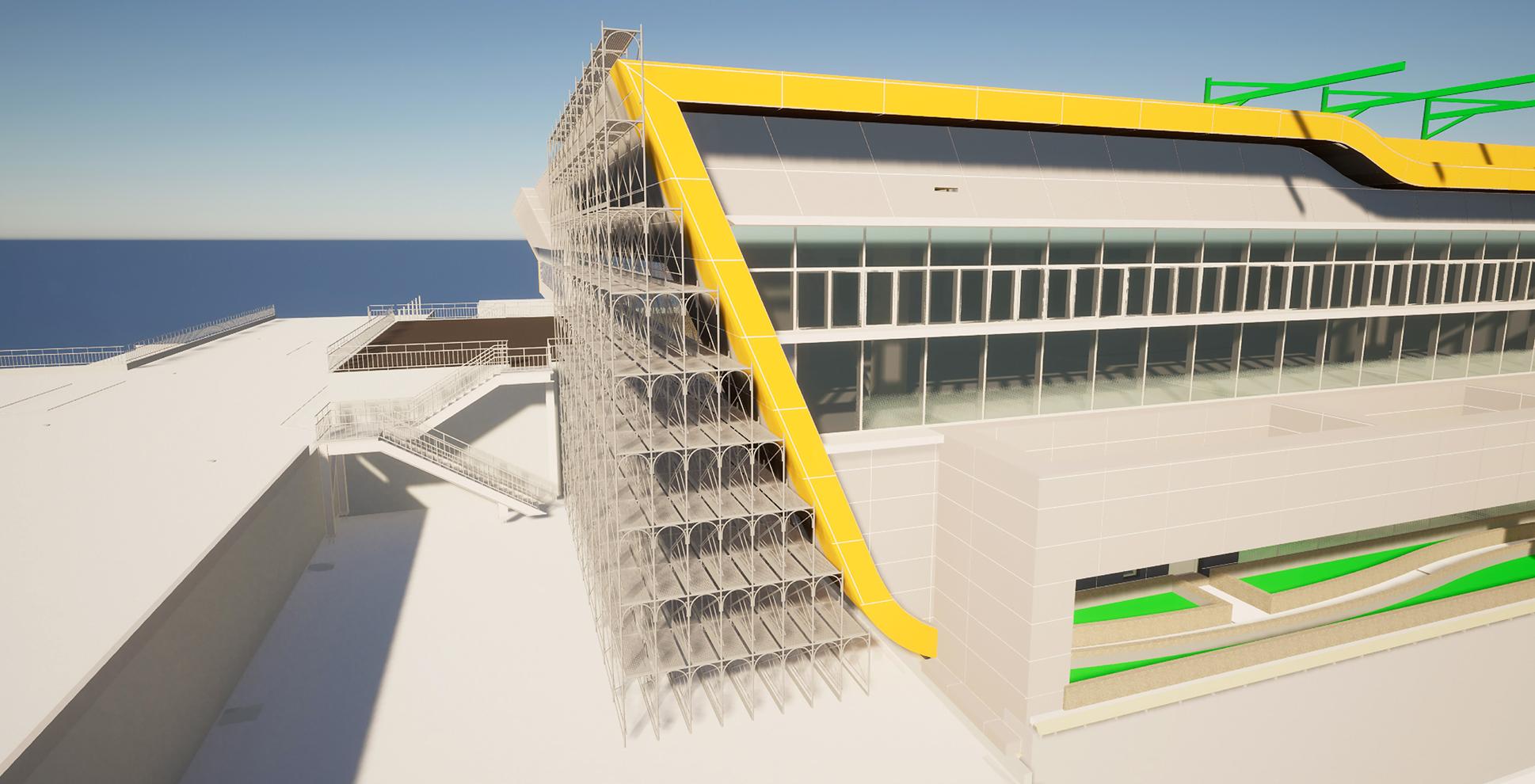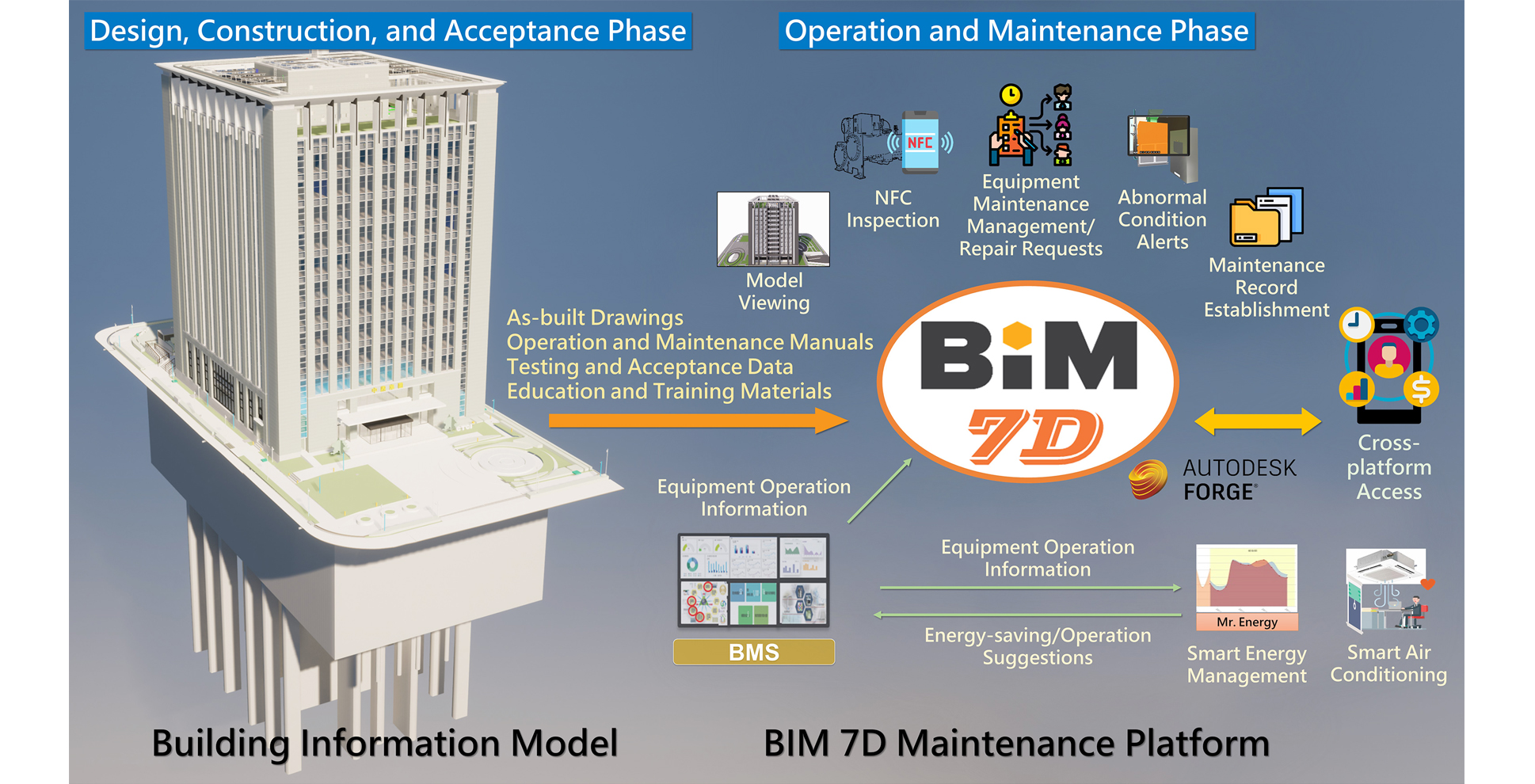Eco-friendly Innovation
綠色創新
Implementing BIM Technology to Promote Sustainable Development Practices
In response to global trends of sustainable development and digital transformation , CTCI Group is dedicated to technological innovation ,research and development in order to enhance the efficiency of execution and quality in engineering services, while making concrete contributions to sustainable development. Among these efforts, the adoption of Building Information Modeling (BIM) technology is a pivotal step. The application of BIM not only enhances design efficiency and improves energy efficiency but also promotes sustainable development. This article takes the design experience of CTCI Smart Engineering Corp. (CTCI SEC), an affiliate of CTCI Group, as an example, illustrating how CTCI utilizes BIM in the stages of design, construction, and operational maintenance to reduce carbon emissions, lower consumption, mitigate the environmental impact of projects, and contribute to achieving sustainable development goals.
Design Phase: BIM Implementation with Illuminance Simulation for Optimized Lighting
In buildings with different ceiling heights, such as decorative ceilings in lobbies or the vaulted space above the escalator area, calculating illuminance values using traditional methods can be challenging for the engineering team. Utilizing illuminance simulation tools during assessments allows the engineers to assess whether the illuminance meets the owner's requirements and regulatory standards. For example, in the design of a metro project, CTCI team imported the BIM model into lighting simulation software and modified the required parameters to successfully optimize the overall lighting design, including the reflectance, maintenance factor, and required illuminance of walls, ceilings, and floors. The software simulation results were reviewed to ensure the illuminance met requirements. If the illuminance was below a certain range, the lighting is identified as insufficient, and additional lighting fixtures were required to be installed. Conversely, values exceeding the range were deemed over-design. With the support of BIM technology, large amount of time can be saved for the preparatory work site, and When further combining it with illuminance simulation software, together they can verify whether the quantity of lighting fixtures have meet requirements. This process helps in selecting appropriate lighting fixtures to ensure indoor work areas meet human visual needs, minimizing glare and uneven lighting. Moreover, it prevents overdesign by reducing unnecessary light fixture installations, leading to further energy conservation and electricity savings.

A luminance simulation display of a vaulted space above the escalator area
Construction Phase: Applying BIM in Construction Sequence Review
The purpose of a construction sequence review during the construction phase is to ensure smooth progress of the construction process, while avoiding work process conflicts between different work items , which may lead to project delays and increased costs. For example, in the expansion project of Taoyuan International Airport Terminal 2, there was a work procedure conflict between the construction of the exterior wall and the installation of the cooling water tower. By applying BIM's ability to simulate the construction process in a virtual space, the CTCI team mocks up various possible scenarios during construction before selecting the solution with the least impact, lowering the possibility for conflicts between construction sequences to occur. By applying BIM's ability to simulate the construction process in a virtual space, the CTCI team mocks up various possible scenarios during construction before selecting the solution with the least impact, thereby lowering the possibility for conflicts between construction sequences to occur. .BIM-based construction sequence review not only improves construction efficiency and reduces costs but also minimizes the waste of resources such as labor and materials due to duplication of efforts.

A simulated display of the construction sequence
Operation and Maintenance Phase: Implementation of BIM Maintenance Platform
In addition to its use in the design and construction phases, the BIM model can be employed for maintenance and management tasks once the facility is operational. The equipment data logged within the BIM model, such as location, specifications, manufacturer, and installation date, can assist property managers in scheduling equipment maintenance and repair work. In addition, the BIM model can be integrated with the central monitoring system to monitor the operating status of equipment in real-time and issue warnings in case of problems. This enables preventive maintenance, improving equipment operating efficiency and extending service life. In the 2nd headquarters building of CTCI Group, the BIM 7D maintenance platform developed by CTCI SEC was adopted for equipment maintenance management. The platform integrates equipment presetting, maintenance, and repair functions into a single platform through a 3D visualization and web-based operation management interface, making maintenance management more convenient and efficient. This platform combines the BIM model transferred upon completion with the signals returned by the central monitoring system to provide equipment warning maintenance and fault repair functions, ensuring the normal operation of critical equipment and extending their service life. And this year, the BIM 7D maintenance platform has successfully obtained the Intelligent Building Materials certification from the Taiwan Intelligent Building Association. In the future, the platform will continue to be utilized in the application of smart buildings, improving operational efficiency and performance , promoting resource conservation, and reducing carbon emissions.

BIM 7D Maintenance Platform
Future Outlook
The application of BIM technology in various stages of design, construction, operation and maintenance not only improve project efficiency but also promotes sustainable development. Looking forward to the future, CTCI Group will strive to promote the application of BIM technology in the engineering field, further deepening its integration at various stages of the project. With the application of BIM technology, the future will see improved efficiency in engineering projects, better resource usage, and the realization of a more intelligent and sustainable management model. It will accelerate digital transformation and create a win-win situation for both industry development and sustainable growth.


